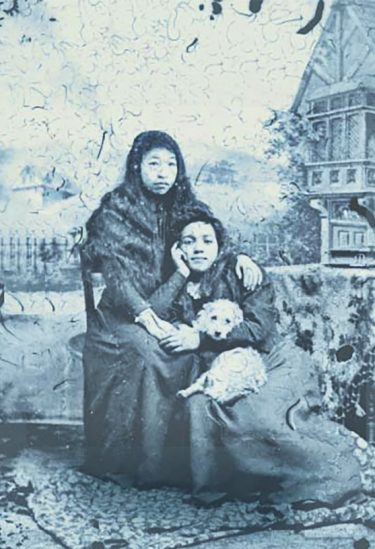A woolly discovery
Long considered to be a myth, a Native blanket made of dog hair has surfaced at the Burke Museum.

Two Coast Salish women with a woolly dog (CHILLIWACK MUSEUM AND ARCHIVES)
On a rainy afternoon last June, tribal members and elders, Burke Museum patrons and students poured into a room just off the lobby of the UW-based natural history museum to see firsthand an artifact so rare, some thought it was a myth: a blanket made of dog hair.
“A simple question by a simple person from the Suquamish led to things like this,” says Marilyn Jones, a traditional heritage specialist with the Suquamish tribe who serves on the museum’s Native American advisory board. More than 10 years ago, Jones was visiting the Smithsonian’s National Museum of the American Indian when she asked a curator there how they could prove that certain Coast Salish tribes used dog hair in their blankets.
The truth lay in the tribes’ oral histories, that for centuries some Native people in the Northwest raised woolly dogs with coats that could be cut and woven into blankets. But the dog breed went extinct not long after white settlement and “for many years scientists said it was a myth and a story,” says Jones. “But we know it was always there … that woolly dog is a part of us.”
Her question prompted an examination of very old blankets in the national collection, which revealed that some did, indeed, contain dog hair. Fast forward to 2016, when weaving expert Liz Hammond-Kaarremaa received a grant to examine blankets in the Burke’s collection. When she saw one particular blanket in person, she realized its provenance—from a well-known collection—and then noticed a tear, she was engrossed.
Further testing verified her findings. The blanket is now the only object confirmed to be made with woolly dog hair in a Northwest museum.